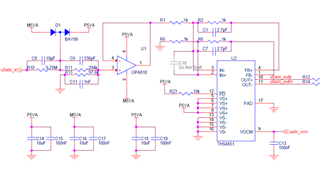Other Parts Discussed in Thread: THS4551, , TINA-TI
Hello,
Please see below issue. We located the root cause is from amplifier circuit.
I would like to ask how to calculate the noise based on current power design.
How to improve this issue?
ADC3422: adc3422 output data issue - Data converters forum - Data converters - TI E2E support forums


